-
 Bitcoin
Bitcoin $83,880.0364
2.80% -
 Ethereum
Ethereum $1,808.9871
2.05% -
 Tether USDt
Tether USDt $0.9996
-0.02% -
 XRP
XRP $2.1254
5.18% -
 BNB
BNB $597.0415
1.77% -
 Solana
Solana $121.8511
6.23% -
 USDC
USDC $0.9999
-0.02% -
 Dogecoin
Dogecoin $0.1711
8.55% -
 Cardano
Cardano $0.6607
4.73% -
 TRON
TRON $0.2400
1.83% -
 UNUS SED LEO
UNUS SED LEO $9.4688
0.77% -
 Chainlink
Chainlink $12.9117
3.28% -
 Toncoin
Toncoin $3.3769
-5.92% -
 Stellar
Stellar $0.2595
1.51% -
 Avalanche
Avalanche $18.0323
0.37% -
 Sui
Sui $2.2780
2.94% -
 Shiba Inu
Shiba Inu $0.0...01226
1.24% -
 Hedera
Hedera $0.1649
3.59% -
 Litecoin
Litecoin $84.3834
3.43% -
 Polkadot
Polkadot $4.0619
1.74% -
 MANTRA
MANTRA $6.2855
-1.22% -
 Bitcoin Cash
Bitcoin Cash $299.4248
1.74% -
 Bitget Token
Bitget Token $4.5468
1.98% -
 Dai
Dai $0.9999
-0.01% -
 Ethena USDe
Ethena USDe $0.9992
-0.02% -
 Monero
Monero $215.2689
2.79% -
 Hyperliquid
Hyperliquid $11.8405
4.32% -
 Uniswap
Uniswap $5.8764
3.23% -
 Pi
Pi $0.5380
-5.19% -
 Pepe
Pepe $0.0...07139
9.88%
What is a stablecoin? How does it maintain price anchoring?
Stablecoins minimize crypto volatility by pegging to stable assets like fiat or gold, offering a reliable value storage and transaction option in the digital economy.
Apr 04, 2025 at 09:49 am
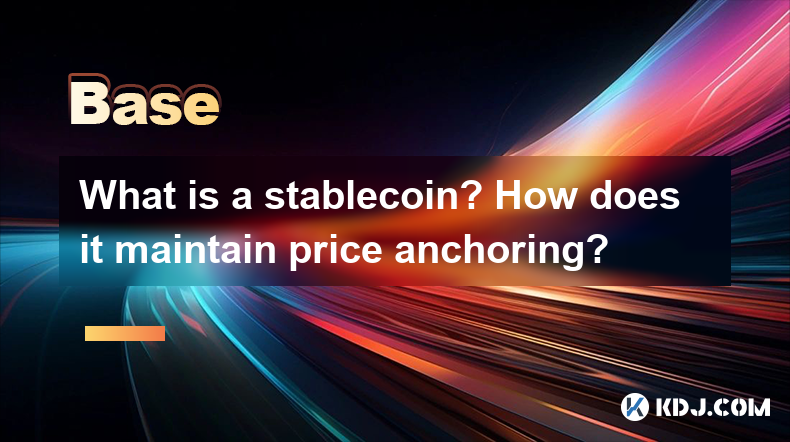
A stablecoin is a type of cryptocurrency designed to minimize the volatility typically associated with other cryptocurrencies like Bitcoin and Ethereum. The primary goal of a stablecoin is to maintain a stable value by pegging it to a more stable asset, such as a fiat currency (like the US dollar) or a commodity (like gold). This stability makes stablecoins an attractive option for users who want to transact or store value in the cryptocurrency ecosystem without being exposed to the wild price swings of other digital assets.
Types of Stablecoins
There are several types of stablecoins, each with its own method of maintaining price stability. The main categories include:
Fiat-collateralized stablecoins: These stablecoins are backed by reserves of fiat currency held in bank accounts. For example, Tether (USDT) and USD Coin (USDC) are pegged to the US dollar and maintain their value by holding an equivalent amount of dollars in reserve.
Crypto-collateralized stablecoins: These stablecoins are backed by other cryptocurrencies. An example is Dai (DAI), which is pegged to the US dollar but backed by Ethereum and other cryptocurrencies held in smart contracts.
Algorithmic stablecoins: These stablecoins use algorithms to control the supply of the token in response to changes in demand, aiming to maintain a stable price. Ampleforth (AMPL) is an example of an algorithmic stablecoin.
Commodity-collateralized stablecoins: These are backed by physical commodities like gold or silver. PAX Gold (PAXG) is an example, where each token represents one ounce of gold.
How Fiat-Collateralized Stablecoins Maintain Price Anchoring
Fiat-collateralized stablecoins maintain their price anchoring through a straightforward mechanism. For every stablecoin in circulation, there is an equivalent amount of fiat currency held in reserve. Here's how it works:
Issuance: When a user wants to acquire a fiat-collateralized stablecoin, they deposit the equivalent amount of fiat currency into the issuer's reserve. In return, they receive the stablecoin.
Redemption: Conversely, if a user wants to convert their stablecoins back into fiat currency, they can redeem their stablecoins for the equivalent amount of fiat held in reserve.
Audits and Transparency: To ensure trust and maintain the peg, issuers of fiat-collateralized stablecoins often undergo regular audits to verify that their reserves match the number of stablecoins in circulation. Transparency reports and attestations from third-party auditors are crucial for maintaining user confidence.
How Crypto-Collateralized Stablecoins Maintain Price Anchoring
Crypto-collateralized stablecoins use a more complex mechanism to maintain their price anchoring. Here's how it works:
Overcollateralization: To account for the volatility of the backing cryptocurrency, these stablecoins require users to deposit more value in cryptocurrency than the value of the stablecoins they wish to mint. For example, to mint $100 worth of Dai, a user might need to deposit $150 worth of Ethereum.
Smart Contracts: The process of minting and redeeming crypto-collateralized stablecoins is managed by smart contracts on the blockchain. These contracts automatically adjust the collateralization ratio and manage the liquidation of collateral if the value of the backing cryptocurrency drops significantly.
Stability Mechanisms: Some crypto-collateralized stablecoins, like Dai, use additional stability mechanisms such as Stability Fees (interest rates) and Stability Pools to maintain the peg. These mechanisms help to incentivize users to keep the stablecoin's value stable.
How Algorithmic Stablecoins Maintain Price Anchoring
Algorithmic stablecoins rely on sophisticated algorithms to maintain their price anchoring. Here's how they work:
Supply Adjustment: The algorithm adjusts the supply of the stablecoin in response to changes in demand. If the price of the stablecoin rises above the peg, the algorithm increases the supply to bring the price back down. Conversely, if the price falls below the peg, the algorithm reduces the supply to increase the price.
Rebasing: Some algorithmic stablecoins, like Ampleforth, use a process called rebasing. This involves periodically adjusting the number of tokens each holder owns to maintain the stablecoin's value. If the price is above the peg, the number of tokens is reduced; if it's below the peg, the number of tokens is increased.
Incentive Mechanisms: To encourage users to participate in the stability mechanism, algorithmic stablecoins often include incentive mechanisms such as rewards for holding or trading the stablecoin.
How Commodity-Collateralized Stablecoins Maintain Price Anchoring
Commodity-collateralized stablecoins maintain their price anchoring by being backed by physical commodities. Here's how it works:
Backing: Each token represents a specific amount of the commodity, such as one ounce of gold for PAX Gold. The issuer holds the physical commodity in secure storage.
Redemption: Users can redeem their tokens for the underlying commodity at any time. This direct link to the commodity's value helps maintain the stablecoin's peg.
Audits and Transparency: Similar to fiat-collateralized stablecoins, commodity-collateralized stablecoins require regular audits to ensure that the issuer holds the claimed amount of the commodity. Transparency reports and third-party attestations are essential for maintaining trust.
Challenges and Risks of Stablecoins
While stablecoins offer the promise of stability within the cryptocurrency ecosystem, they are not without challenges and risks. Some of the key issues include:
Counterparty Risk: For fiat-collateralized and commodity-collateralized stablecoins, there is a risk that the issuer may not hold the claimed reserves. This risk can lead to a loss of trust and a potential collapse of the stablecoin's value.
Regulatory Risk: Stablecoins are subject to regulatory scrutiny, and changes in regulations can impact their operation and acceptance. For example, regulatory actions against Tether have caused market uncertainty.
Smart Contract Risk: Crypto-collateralized stablecoins rely on smart contracts, which can be vulnerable to bugs and hacks. A failure in the smart contract can lead to the loss of collateral and destabilization of the stablecoin.
Algorithmic Risk: Algorithmic stablecoins are highly dependent on the effectiveness of their algorithms. If the algorithm fails to adjust the supply correctly, the stablecoin can lose its peg and become volatile.
Frequently Asked Questions
Q: Can stablecoins be used for everyday transactions?
A: Yes, stablecoins can be used for everyday transactions, especially in regions where traditional banking services are limited. They offer a stable value for transactions, making them suitable for payments, remittances, and other financial activities.
Q: Are stablecoins considered legal tender?
A: Stablecoins are not considered legal tender in most jurisdictions. They are a form of cryptocurrency and are subject to the regulations governing digital assets. However, some countries are exploring the use of stablecoins as part of their digital currency initiatives.
Q: How do stablecoins impact the broader cryptocurrency market?
A: Stablecoins play a crucial role in the broader cryptocurrency market by providing liquidity and stability. They are often used as a safe haven during periods of high volatility and serve as a bridge between traditional finance and the cryptocurrency ecosystem.
Q: Can stablecoins be used for lending and borrowing?
A: Yes, stablecoins are commonly used in decentralized finance (DeFi) platforms for lending and borrowing. Users can deposit stablecoins as collateral to borrow other cryptocurrencies or lend their stablecoins to earn interest.
Disclaimer:info@kdj.com
The information provided is not trading advice. kdj.com does not assume any responsibility for any investments made based on the information provided in this article. Cryptocurrencies are highly volatile and it is highly recommended that you invest with caution after thorough research!
If you believe that the content used on this website infringes your copyright, please contact us immediately (info@kdj.com) and we will delete it promptly.
- In the middle of the fading of the dynamics of Solana (SOL) gather at 131 US dollars
- 2025-04-05 02:20:12
- Polkadot (DOT -5.15%) cryptocurrency isn't getting any market love these days
- 2025-04-05 02:20:12
- XRP Struggles to Hold Key Support Levels as Broader Market Downturn Intensifies
- 2025-04-05 02:15:12
- Flowdesk Joins Canton Network's Initiative to Create Advanced On-Chain Solution for Collateral and Margin Management
- 2025-04-05 02:15:12
- OKX Wallet Expands Its Horizons by Collaborating with StakeStone to Offer Unique $STO Airdrop Bonus
- 2025-04-05 02:10:12
- RXR.Lab Highlights: The Future of the Gambling Industry Is Decentralized
- 2025-04-05 02:10:12
Related knowledge

Why is the oracle called the bridge between blockchain and the real world?
Apr 04,2025 at 04:00am
The concept of an oracle in the cryptocurrency and blockchain world is crucial for understanding how these decentralized systems interact with external data. The oracle is often referred to as the bridge between blockchain and the real world because it serves as a vital intermediary that fetches, verifies, and transmits off-chain data to the on-chain en...

What role does the Merkle tree play in the blockchain? Why can it verify data integrity?
Apr 04,2025 at 01:29pm
The Merkle tree plays a crucial role in the blockchain, primarily due to its ability to efficiently and securely verify data integrity. This article will delve into the structure of a Merkle tree, its implementation in blockchain, and how it ensures the integrity of data. Understanding the Structure of a Merkle TreeA Merkle tree, also known as a hash tr...
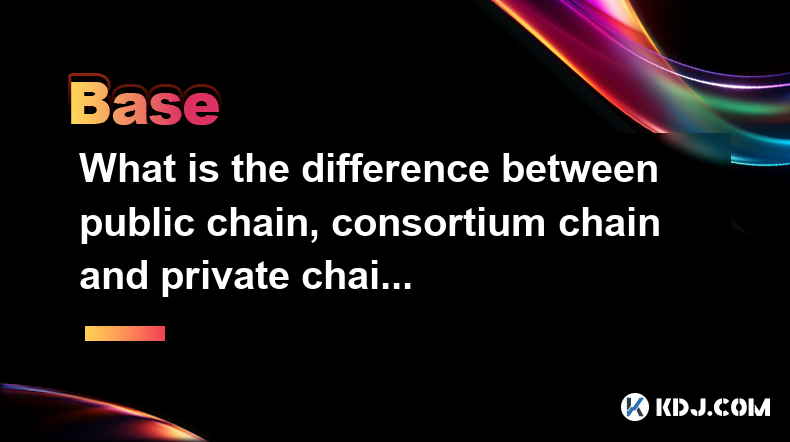
What is the difference between public chain, consortium chain and private chain? What scenarios are suitable for each?
Apr 04,2025 at 09:21pm
In the world of blockchain technology, understanding the differences between public chains, consortium chains, and private chains is crucial for selecting the right type of blockchain for specific applications. Each type of blockchain has its own unique characteristics and use cases, which we will explore in detail. Understanding Public ChainsPublic cha...
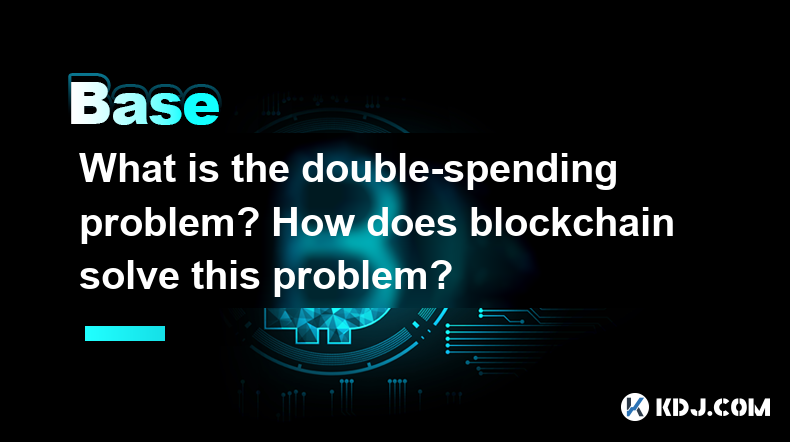
What is the double-spending problem? How does blockchain solve this problem?
Apr 04,2025 at 09:07am
The double-spending problem is a significant challenge in the realm of digital currencies. Double-spending refers to the potential for a digital currency to be spent more than once. This issue arises because digital files, unlike physical cash, can be easily duplicated. If not addressed, double-spending could undermine the integrity and trust in any dig...
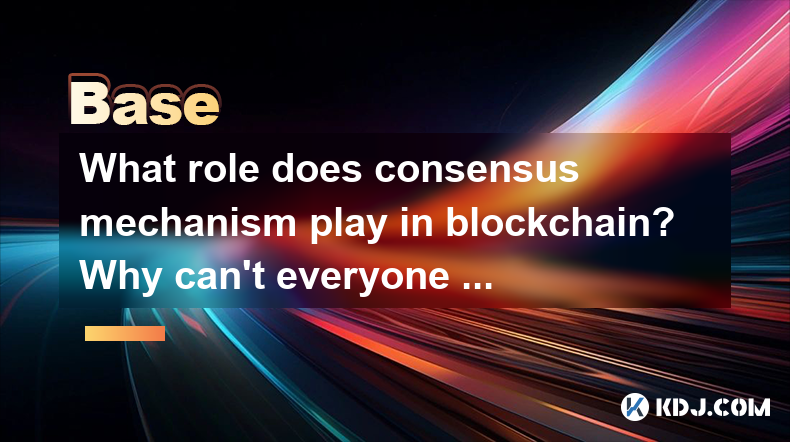
What role does consensus mechanism play in blockchain? Why can't everyone keep accounts?
Apr 05,2025 at 12:29am
The consensus mechanism is a fundamental component of blockchain technology, serving as the backbone for maintaining the integrity and security of the network. It ensures that all participants in the network agree on the state of the ledger, which is crucial for the decentralized nature of blockchain. Without a consensus mechanism, the decentralized sys...
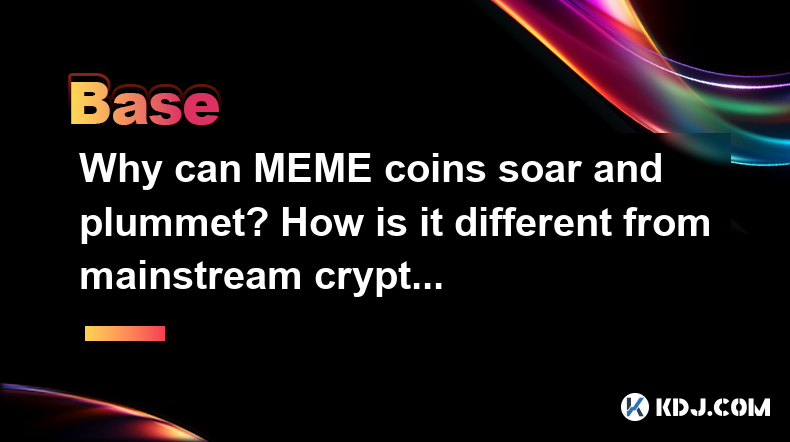
Why can MEME coins soar and plummet? How is it different from mainstream cryptocurrencies?
Apr 04,2025 at 03:07pm
The world of cryptocurrencies is vast and diverse, with a wide range of digital assets that cater to different needs and interests. Among these, MEME coins have carved out a unique niche, often experiencing dramatic price fluctuations that can both soar and plummet in a short period. This phenomenon, while intriguing, differs significantly from the beha...

Why is the oracle called the bridge between blockchain and the real world?
Apr 04,2025 at 04:00am
The concept of an oracle in the cryptocurrency and blockchain world is crucial for understanding how these decentralized systems interact with external data. The oracle is often referred to as the bridge between blockchain and the real world because it serves as a vital intermediary that fetches, verifies, and transmits off-chain data to the on-chain en...

What role does the Merkle tree play in the blockchain? Why can it verify data integrity?
Apr 04,2025 at 01:29pm
The Merkle tree plays a crucial role in the blockchain, primarily due to its ability to efficiently and securely verify data integrity. This article will delve into the structure of a Merkle tree, its implementation in blockchain, and how it ensures the integrity of data. Understanding the Structure of a Merkle TreeA Merkle tree, also known as a hash tr...

What is the difference between public chain, consortium chain and private chain? What scenarios are suitable for each?
Apr 04,2025 at 09:21pm
In the world of blockchain technology, understanding the differences between public chains, consortium chains, and private chains is crucial for selecting the right type of blockchain for specific applications. Each type of blockchain has its own unique characteristics and use cases, which we will explore in detail. Understanding Public ChainsPublic cha...

What is the double-spending problem? How does blockchain solve this problem?
Apr 04,2025 at 09:07am
The double-spending problem is a significant challenge in the realm of digital currencies. Double-spending refers to the potential for a digital currency to be spent more than once. This issue arises because digital files, unlike physical cash, can be easily duplicated. If not addressed, double-spending could undermine the integrity and trust in any dig...

What role does consensus mechanism play in blockchain? Why can't everyone keep accounts?
Apr 05,2025 at 12:29am
The consensus mechanism is a fundamental component of blockchain technology, serving as the backbone for maintaining the integrity and security of the network. It ensures that all participants in the network agree on the state of the ledger, which is crucial for the decentralized nature of blockchain. Without a consensus mechanism, the decentralized sys...

Why can MEME coins soar and plummet? How is it different from mainstream cryptocurrencies?
Apr 04,2025 at 03:07pm
The world of cryptocurrencies is vast and diverse, with a wide range of digital assets that cater to different needs and interests. Among these, MEME coins have carved out a unique niche, often experiencing dramatic price fluctuations that can both soar and plummet in a short period. This phenomenon, while intriguing, differs significantly from the beha...
See all articles





















































































